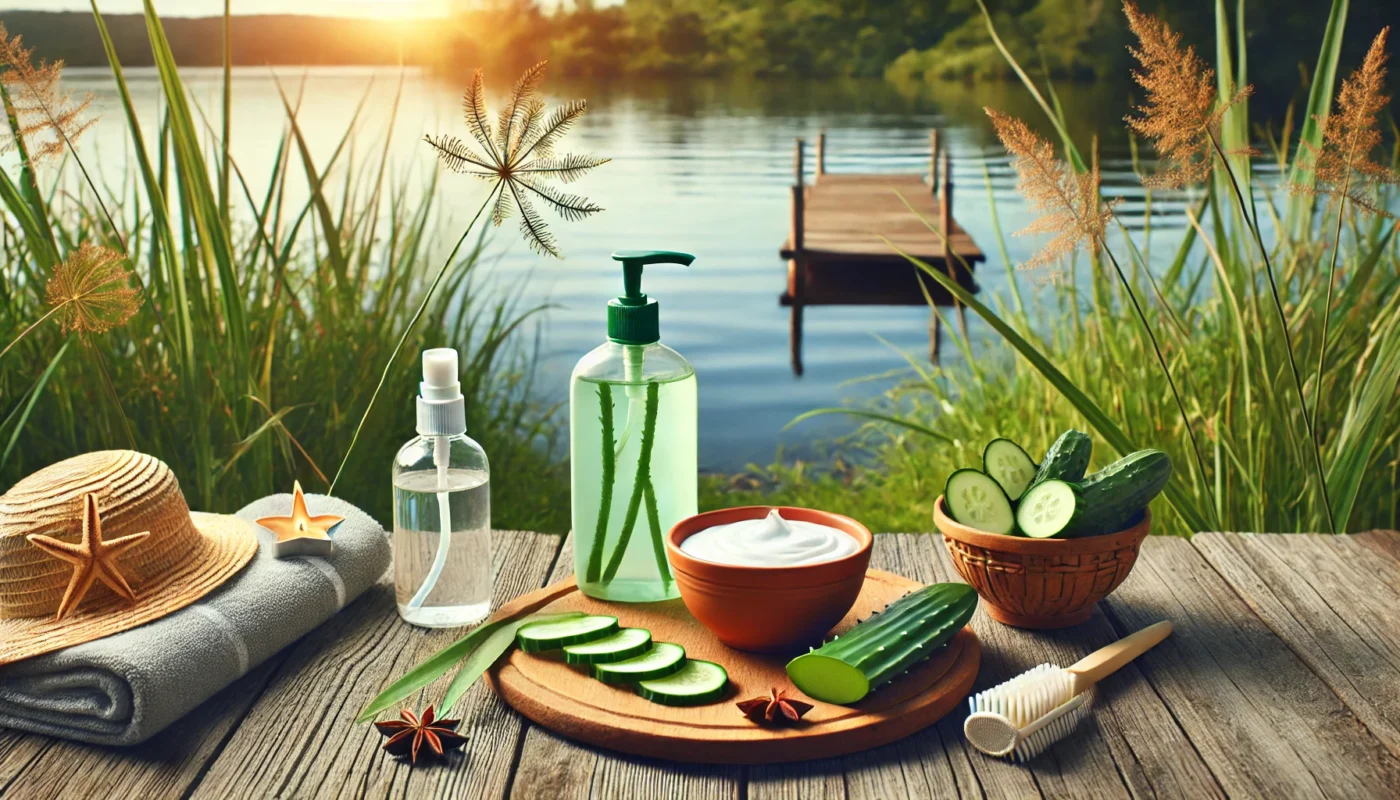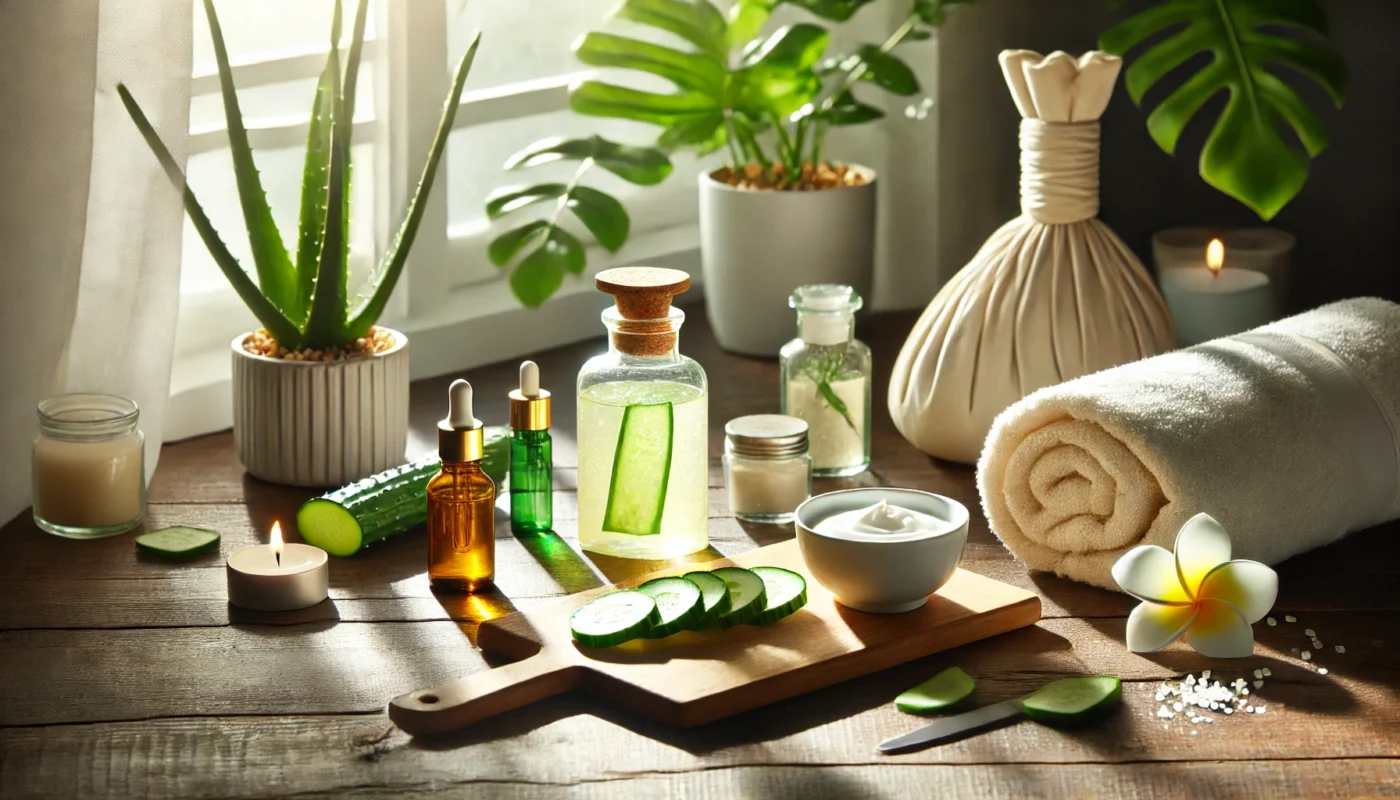Sunburn occurs when your skin is overexposed to ultraviolet (UV) rays, leading to inflammation and damage. This can result in redness, swelling, pain, and in severe cases, blistering. It’s important to address sunburn promptly to mitigate these symptoms and promote healing.
You may also like: Essential Tips for Sun Protection Daily
The Science Behind Sunburn
The redness associated with sunburn is due to increased blood flow to the affected area as part of the body’s inflammatory response. This is a natural healing process, but it can be uncomfortable and unsightly. Accelerating this process safely requires both topical and systemic interventions. When UV rays penetrate the skin, they damage the DNA of skin cells, triggering the immune system to respond by increasing blood flow to the area, resulting in redness and warmth. This inflammatory response is essential for healing, but it can also cause discomfort.
Types of UV Rays and Their Effects
There are two main types of UV rays that affect the skin: UVA and UVB. UVA rays penetrate deeply into the skin and are primarily responsible for aging and long-term skin damage. UVB rays, on the other hand, are the main cause of sunburn as they affect the outermost layers of the skin. Understanding these differences can help in choosing the right sun protection and treatment strategies.
Long-Term Implications of Sunburn
Repeated sunburns can lead to long-term skin damage, including premature aging, discoloration, and an increased risk of skin cancer. The cumulative effect of UV exposure can weaken the skin’s structural integrity over time, making it more susceptible to further damage. Therefore, adopting both preventive measures and effective treatments is crucial for maintaining skin health.
Immediate Remedies for Sunburn Redness
When you first notice sunburn, immediate action can help reduce redness and discomfort. Here are some scientifically-backed remedies to consider:
Cool Compresses
Applying a cool, damp cloth to the sunburned area can help soothe the skin and reduce inflammation. Make sure the water isn’t too cold, as extreme temperatures can further irritate the skin. Use soft, clean fabrics to avoid additional irritation, and leave the compress on for 10-15 minutes, repeating as needed throughout the day. This simple method helps constrict blood vessels, reducing swelling and redness.
Aloe Vera Gel
Aloe vera is a well-known remedy for sunburn relief. It has anti-inflammatory properties that help reduce redness and promote healing. Opt for pure aloe vera gel without added fragrances or alcohol, which can irritate the skin. Apply a generous amount directly to the affected area and let it absorb naturally; reapply as necessary to maintain a cooling effect. Aloe vera not only soothes but also helps repair damaged skin cells.
Hydration
Sunburn draws fluid to the skin’s surface and away from the rest of the body, so it’s important to stay hydrated. Drinking plenty of water supports the skin’s healing process and helps reduce overall inflammation. In addition to water, consuming hydrating foods like watermelon and cucumber can further aid in maintaining hydration levels. Avoid alcohol and caffeine, as they can exacerbate dehydration.
Over-the-Counter Anti-Inflammatories
Non-steroidal anti-inflammatory drugs (NSAIDs) like ibuprofen can help reduce swelling and redness by decreasing the body’s inflammatory response. Follow the recommended dosage and consult a healthcare provider if you have any concerns. These medications can also help alleviate pain associated with sunburn. Take them with food to minimize stomach irritation and ensure proper absorption.

Moisturizing Lotions
Using a gentle, unscented moisturizer can help keep the skin hydrated and reduce peeling. Look for lotions containing ingredients like hyaluronic acid or glycerin, which attract moisture to the skin. Apply the moisturizer after a cool shower or bath to lock in moisture and soothe the sunburned area. Avoid products with alcohol or fragrances, as these can further irritate sensitive skin.
Overnight Solutions for Sunburn Redness
While it might be impossible to completely heal a sunburn overnight, there are several strategies you can employ to significantly reduce redness and discomfort by morning.
Milk Compress
The proteins, fat, and pH balance in milk have soothing properties that can help with sunburn. Soak a cloth in cool milk and apply it to the affected area. Leave it on for about 15-20 minutes, then rinse with cool water. The lactic acid in milk can also gently exfoliate dead skin cells, promoting healing. For best results, use whole milk, as its higher fat content provides more soothing benefits.
Oatmeal Baths
Oatmeal has anti-inflammatory properties that can help soothe sunburn. An oatmeal bath can provide relief and reduce redness. Simply grind a cup of oats into a fine powder and add it to lukewarm bathwater. Soak for 15-20 minutes. The colloidal properties of oatmeal create a protective barrier on the skin, which helps retain moisture and reduce irritation. After the bath, pat your skin dry gently to avoid further irritation.
Vitamin E and C
These antioxidants can help repair skin damage. Apply a vitamin E oil or cream to the affected area before bed, and consider taking a vitamin C supplement to boost your skin’s healing process. Vitamin E acts as a moisturizer and anti-inflammatory agent, while vitamin C supports collagen production and reduces free radical damage. Together, they enhance the skin’s natural repair mechanisms.
Hydrocortisone Cream
For severe redness and itching, a low-dose hydrocortisone cream can be effective. This over-the-counter medication reduces inflammation and eases discomfort. Use it as directed and avoid long-term use without consulting a healthcare professional. Apply a thin layer to the affected area once or twice daily, and monitor your skin for any adverse reactions. This treatment can be particularly helpful for sunburns with intense itching.

Herbal Remedies
Certain herbal remedies, such as chamomile or calendula, can offer additional relief for sunburned skin. Chamomile has soothing and anti-inflammatory properties, while calendula promotes healing and reduces redness. You can find these ingredients in creams or make a cool herbal infusion to apply as a compress. Always perform a patch test to ensure you don’t have an allergic reaction.
Can a Sunburn Heal Overnight?
While it’s a common query, the reality is that a sunburn cannot fully heal overnight. However, with the right care, you can significantly reduce redness and discomfort, expediting the overall healing process.
Tips for Accelerated Healing
- Avoid Further Sun Exposure: Protect the affected area from additional UV exposure to prevent worsening of the condition. Use clothing, hats, and umbrellas to shield your skin and apply sunscreen to any exposed areas, even on cloudy days.
- Moisturize Regularly: Keeping the skin moisturized with a gentle, unscented lotion can prevent peeling and promote healing. Moisturizers containing ingredients like ceramides or urea can help restore the skin’s barrier function.
- Avoid Tight Clothing: Loose-fitting, breathable clothing can prevent additional irritation to the sunburned area. Choose natural fabrics like cotton or linen that allow air circulation and reduce friction against the skin.
Long-Term Skin Care After Sunburn
Once the acute phase of sunburn has passed, focus on long-term skin care to prevent future damage. Incorporate daily sunscreen into your routine, even during winter months, and consider using products with antioxidants to protect against environmental stressors. Regularly check your skin for any changes, and consult a dermatologist if you notice suspicious moles or lesions.
When to Seek Medical Attention
If your sunburn is severe or accompanied by symptoms like dizziness, nausea, or severe blistering, it’s important to seek medical attention. These symptoms may indicate sun poisoning or heatstroke, which require professional treatment. Additionally, if you experience signs of infection, such as pus or increasing pain, consult a healthcare provider promptly.

Conclusion
Sunburn can be an uncomfortable reminder of a day spent in the sun without adequate protection. While prevention through sunscreen and protective clothing is ideal, understanding how to treat sunburn effectively can minimize its impact. By combining immediate and overnight remedies, you can alleviate redness and discomfort, supporting your skin’s natural healing process.
Remember, if your sunburn is severe or accompanied by symptoms like dizziness, nausea, or severe blistering, it’s important to seek medical attention. Your skin is your body’s largest organ, and taking care of it is crucial for your overall health and wellbeing. Prioritize sun safety by staying informed about UV index levels and making sun protection a daily habit to enjoy the sun responsibly.
The best ways to treat a sunburn
Simple Tips on How to Heal a Sunburn
sunburn, sunburn remedies, sunburn relief, skin care, aloe vera, cool compress, hydration, oatmeal bath, vitamin E, vitamin C, herbal remedies, skin healing, UV protection, sun damage, skin inflammation, skin care tips.
Important Note: The information contained in this article is for general informational purposes only, and should not be construed as health or medical advice, nor is it intended to diagnose, prevent, treat, or cure any disease or health condition. Before embarking on any diet, fitness regimen, or program of nutritional supplementation, it is advisable to consult your healthcare professional in order to determine its safety and probable efficacy in terms of your individual state of health.
Regarding Nutritional Supplements Or Other Non-Prescription Health Products: If any nutritional supplements or other non-prescription health products are mentioned in the foregoing article, any claims or statements made about them have not been evaluated by the U.S. Food and Drug Administration, and such nutritional supplements or other health products are not intended to diagnose, treat, cure, or prevent any disease.

